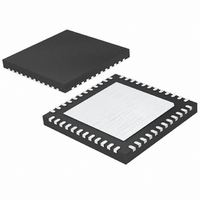LTC2234IUK Linear Technology, LTC2234IUK Datasheet - Page 20

LTC2234IUK
Manufacturer Part Number
LTC2234IUK
Description
IC ADC 10BIT 135MSPS SAMPL 48QFN
Manufacturer
Linear Technology
Datasheet
1.LTC2234IUKPBF.pdf
(24 pages)
Specifications of LTC2234IUK
Number Of Bits
10
Sampling Rate (per Second)
135M
Data Interface
Parallel
Number Of Converters
1
Power Dissipation (max)
680mW
Voltage Supply Source
Single Supply
Operating Temperature
-40°C ~ 85°C
Mounting Type
Surface Mount
Package / Case
48-WFQFN, Exposed Pad
Lead Free Status / RoHS Status
Contains lead / RoHS non-compliant
Available stocks
Company
Part Number
Manufacturer
Quantity
Price
Company:
Part Number:
LTC2234IUK#PBF
Manufacturer:
Linear Technology
Quantity:
135
APPLICATIO S I FOR ATIO
LTC2234
Clock Sources for Undersampling
Undersampling raises the bar on the clock source and the
higher the input frequency, the greater the sensitivity to
clock jitter or phase noise. A clock source that degrades
SNR of a full-scale signal by 1dB at 70MHz will degrade
SNR by 3dB at 140MHz, and 4.5dB at 190MHz.
In cases where absolute clock frequency accuracy is
relatively unimportant and only a single ADC is required,
a 3V canned oscillator from vendors such as Saronix or
Vectron can be placed close to the ADC and simply
connected directly to the ADC. If there is any distance to
the ADC, some source termination to reduce ringing that
may occur even over a fraction of an inch is advisable. You
must not allow the clock to overshoot the supplies or
performance will suffer. Do not filter the clock signal with
a narrow band filter unless you have a sinusoidal clock
source, as the rise and fall time artifacts present in typical
digital clock signals will be translated into phase noise.
The lowest phase noise oscillators have single-ended
sinusoidal outputs, and for these devices the use of a filter
close to the ADC may be beneficial. This filter should be
close to the ADC to both reduce roundtrip reflection times,
as well as reduce the susceptibility of the traces between
the filter and the ADC. If you are sensitive to close-in phase
noise, the power supply for oscillators and any buffers
20
U
U
W
U
must be very stable, or propagation delay variation with
supply will translate into phase noise. Even though these
clock sources may be regarded as digital devices, do not
operate them on a digital supply. If your clock is also used
to drive digital devices such as an FPGA, you should locate
the oscillator, and any clock fan-out devices close to the
ADC, and give the routing to the ADC precedence. The
clock signals to the FPGA should have series termination
at the source to prevent high frequency noise from the
FPGA disturbing the substrate of the clock fan-out device.
If you use an FPGA as a programmable divider, you must
re-time the signal using the original oscillator, and the re-
timing flip-flop as well as the oscillator should be close to
the ADC, and powered with a very quiet supply.
For cases where there are multiple ADCs, or where the
clock source originates some distance away, differential
clock distribution is advisable. This is advisable both from
the perspective of EMI, but also to avoid receiving noise
from digital sources both radiated, as well as propagated
in the waveguides that exist between the layers of multi-
layer PCBs. The differential pairs must be close together,
and distanced from other signals. The differential pair
should be guarded on both sides with copper distanced at
least 3x the distance between the traces, and grounded
with vias no more than 1/4 inch apart.
2234fa













